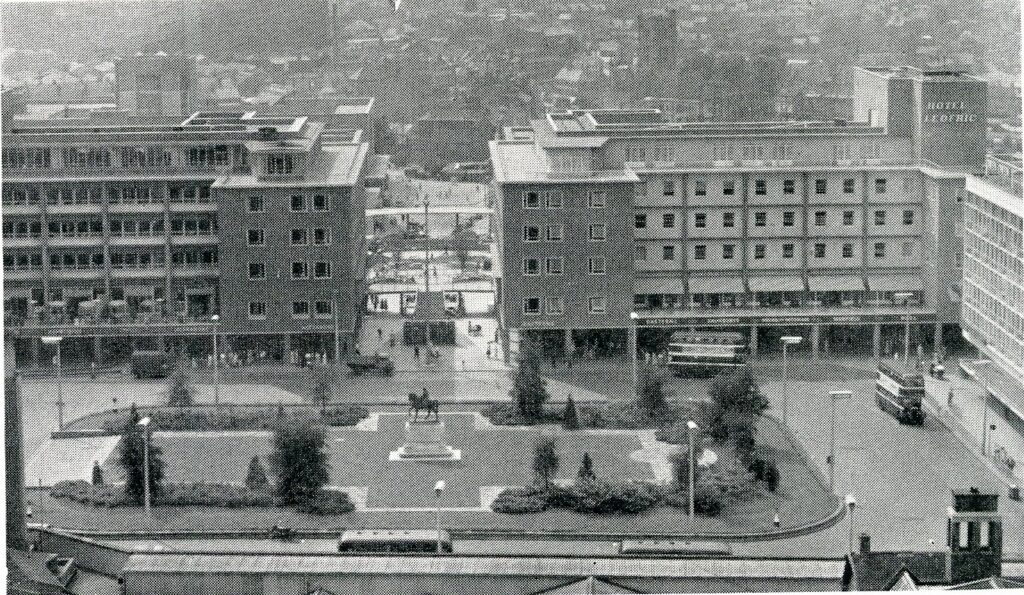
Historian and CovSoc Committee member, David Fry, has been studying past editions of the Alfred Herbert Newsletter. These Newsletters are much more than just a works magazine and some articles give an invaluable insight into the thinking in the city at the time they were written. The article below is extracted from a 1957 edition, looking back at past years of activity in the busy post-war city, and is written in the idiosyncratic style of an Alfred Herbert’s employee.
1955 saw a number of recognisable elements of the current city centre come into being...
The year 1955 opened on a rather sombre note.
Not only were 12,000 workers at the Standard Motor Company on strike but industry as a whole was faced with disaster in the shape of the threatened railway strike.
As a consequence, the New Year Eve celebrations were much quieter than in previous years. Perhaps it was only a coincidence that the New Year’s Honours List was completely quiet as far as Coventry was concerned.
By the end of the first week however things began to look a little brighter. The Standard strikers resumed work and it was stated that unemployment in the city was the lowest since the war, there being only 279 men and 180 women out of work.
On January 8th the Coventry Evening Telegraph carried an interesting announcement to the effect that a London firm of antique dealers had offered Coventry Corporation a silver figure of Lady Godiva weighing 228 ounces and standing 19 inches high for the sum of £170.
This was of more than particular interest for, apart from being a really exquisite statue of Lady Godiva it was also the “twin” to one which the Prince Consort had had made for Queen Victoria in 1856. It was hoped, said the article, that the necessary money could be found so that the statue could find a permanent home in Coventry. Within half an hour of the announcement appearing a friend of the Lord Mayor sent him a cheque for this purpose.
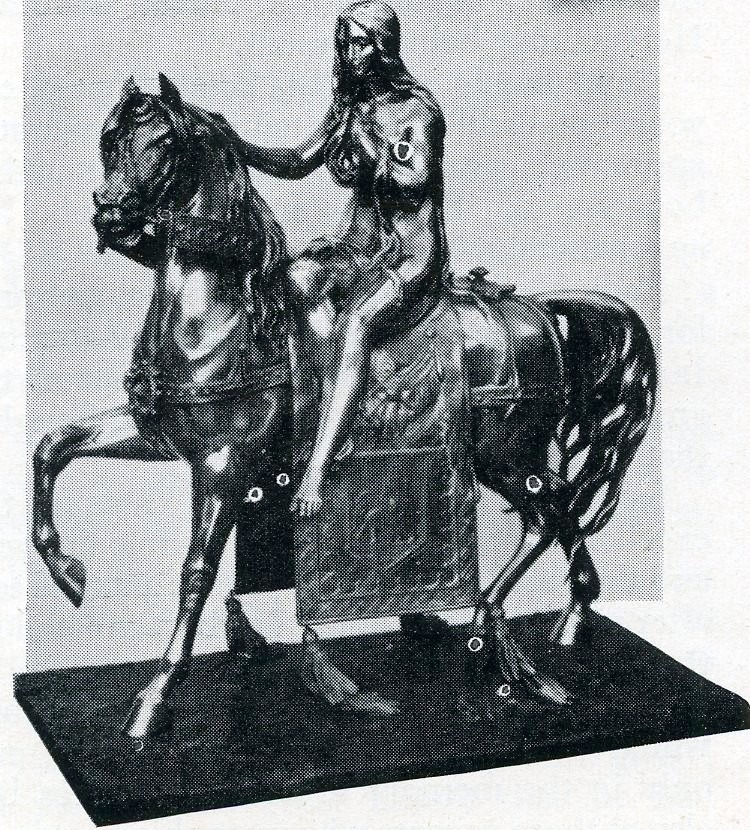
Thus these two exquisite examples of silverware by the sculptor E. Jeanest now occupy exalted—if very different—places of honour. One, which is now regarded as a Royal heirloom, is in Windsor Castle while the other, now a Coventry heirloom, is in the Lord Mayor’s Parlour.
A few days later the entire country was locked solid in winter’s icy grip. In Coventry, after a fall of 2 inches of snow, the temperature rapidly fell to 19°F. with the result that the swans in the Swanswell were found frozen in the ice. In the north, roads were blocked and trains stranded, while in London Big Ben was stopped by driving snow.
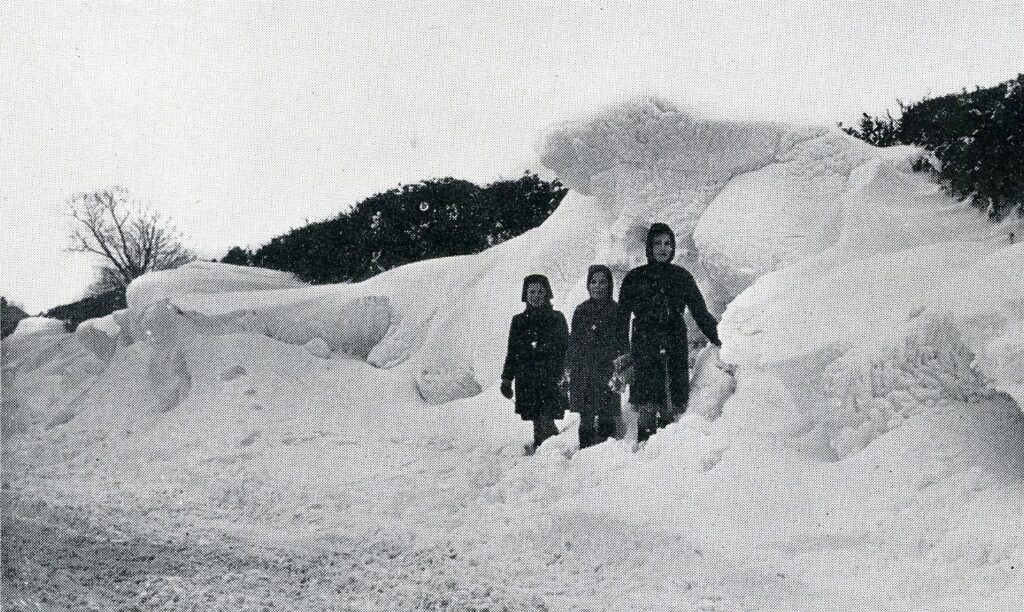
As the days passed the weather worsened so that at the week-end 39 first-class football matches had to be cancelled. By the 19th conditions had so deteriorated that the R.A.F. and the Royal Navy had started “Operation Snowdrift” in Scotland, using planes and helicopters to drop food and evacuate the sick.
Then came news that startled the football world. Mr. Jesse Carver had been appointed manager-coach to Coventry City Football Club and would take up his duties as soon as his contract with F.C. Roma in Italy expired in July.
It was not quite clear whether the Coventry team expected big things from Mr. Carver or Mr. Carver expected big things from the team. As to that, time of course would show.
One thing was clear, however, the City supporters expected to see first-class football in the coming season seeing that Mr. Carver would be the highest paid manager-coach in English football.
Another pleasurable item of news came on February 5th when the Cathedral Reconstruction Committee stated that it had placed the contract for the building of the new cathedral foundations, at a cost of £90,739, with John Laing and Son Ltd.
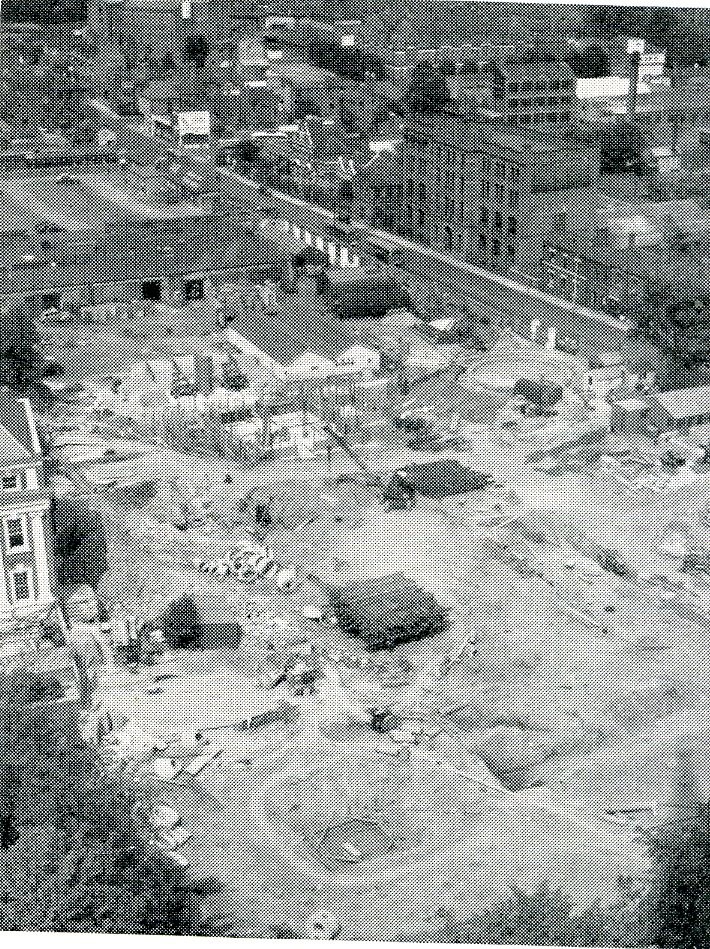
Hard on the heels of this announcement came news of a similar nature from the Corporation who had also placed a contract —for the commencement of the new Herbert Art Gallery and Museum.
Still the blizzards continued so that the air lift had to be recommenced in the north, Coventry was once more blanketed with snow, and 130 main roads were blocked.
By the end of February, however, winter’s grip relaxed and almost overnight extensive thawing was reported from all over the country.
And once again came the now oft recurring Coventry theme “Off with the old and on with the new”.
On March 3rd the Lord Mayor opened the £125,000 College of Art in Cope Street. While this college was the first to be built in the country since the war it was never-the less only the first instalment of the proposed College of Art and Technology which, when finished, would cost £400,000.
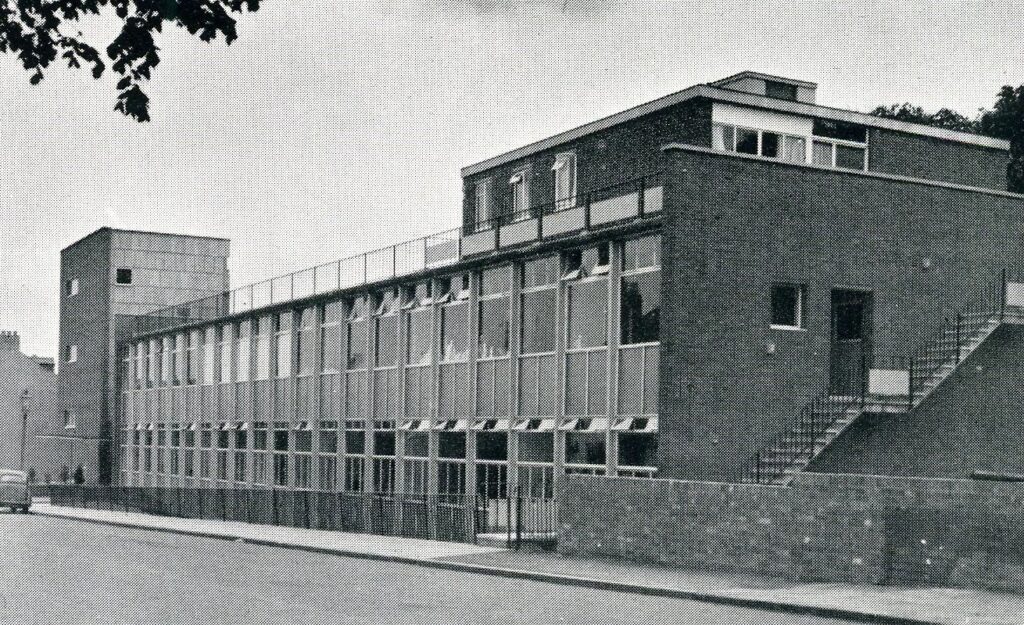
Three days later, older Coventrians noted with regret that barriers were being erected across Priory Row in connection with the building of the cathedral. Priory Row, one of Coventry’s oldest thoroughfares, had ceased to be.
On May 26th torrential rain fell and reached the highest March figures to be recorded since 1919. While this fact may have been of academic interest to the few, to many people in Coventry it was a minor disaster for several parts of the city were flooded to a depth of two or three feet.
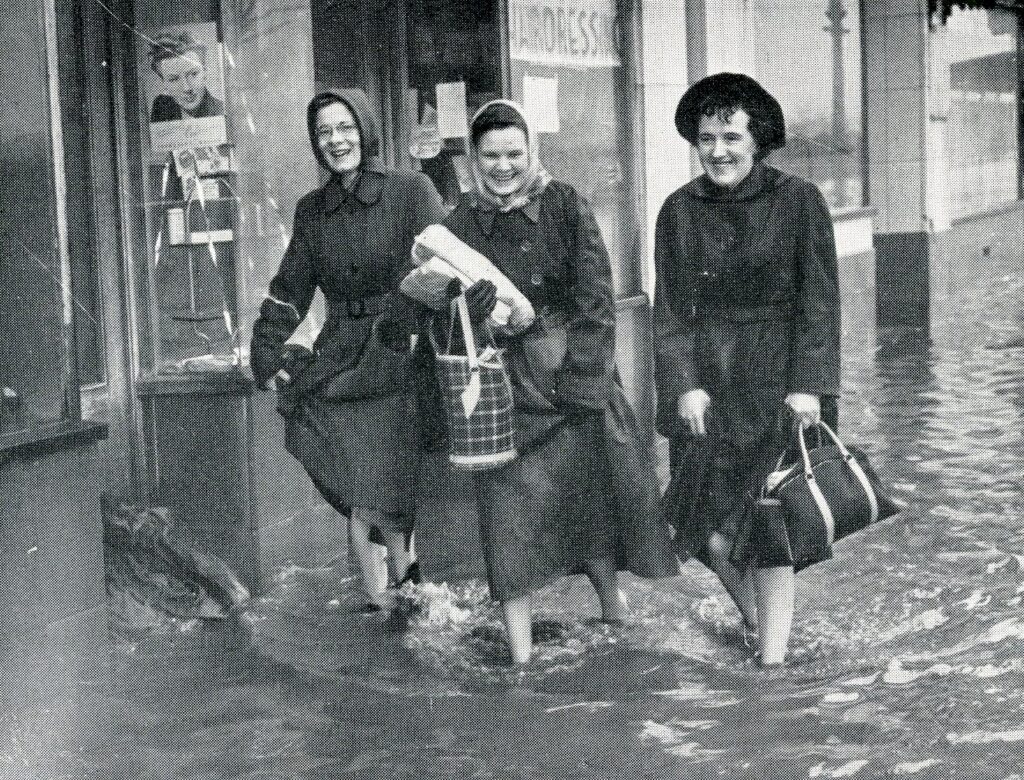
And now once again the seemingly inevitable recurrence of strikes. A controversy between two unions brought out 13,000 Merseyside dockers, the national newspapermen in London went on strike, to be followed by the refuse collectors in Birmingham.
Fortunately two of the strikes were of short duration for the dockers returned to work on March 31st and the refuse collectors on April 5th, but the newspaper strike continued with the result that one of the greatest events of the year, the resignation of Sir Winston Churchill as Prime Minister, was greeted by a silent press.
It was ironical that one of the greatest leaders and statesmen that this country has ever produced should retire from office almost unnoticed. Of him a local newspaper said “The debt which the whole world owes to Sir Winston is beyond computation. The veneration in which he is held over a great part of the earth is without parallel in recorded history”.
On the 17th of the month a simple but impressive ceremony took place in the Memorial Park when a memorial was unveiled to commemorate the gallantry of Corporal Arthur Hutt, the only Coventry born holder of the Victoria Cross, who died in 1954. The ceremony was performed by the Lord Mayor after which a military parade, a mile long, marched through the city.
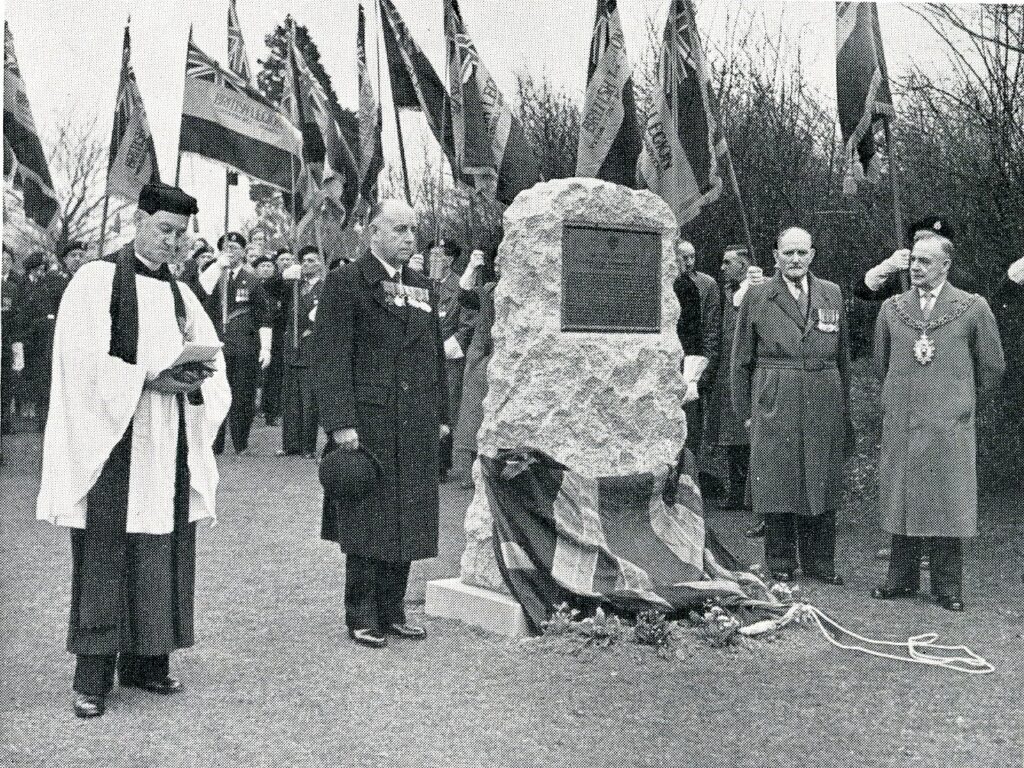
Four days later the newspaper strike was over, just in time to inform the nation that the Yorkshire miners had gone on strike and that the railway workers threatened a national stoppage on May 1st unless their pay demands were met.
And then at last, after 15 years, Coventry once more possessed a first-class hotel, for on April 28th the Lord Mayor officially opened the £800,000 Hotel Leofric, the largest and most luxurious post-war hotel to be built in Britain.
The next few days brought a very varied assortment of news. On April 30th the threatened railway strike was called off, on May 5th West Germany was proclaimed an independent state, on the 6th Parliament was prorogued in readiness for a general election, while the number of Yorkshire miners idle had risen to the fantastic number of 83,000.
From the results of the borough elections a few days later it seemed that a Conservative Government was a certainty for the Labour Party lost 390 seats against a gain of 49 while the Conservatives gained 346 for the loss of 35.
In Coventry, although the Conservatives gained 5 seats the Labour Party nevertheless retained control.
On May 16th the Yorkshire miners resumed work after the strike had cost the country over 1,000,000 tons of coal.
In Coventry a very interesting discovery took place at this time during the excavations for the new cathedral. Part of an old buttress and wall were unearthed which were later identified as belonging to the ancient Benedictine Cathedral founded by Lady Godiva. In itself the discovery was of no great importance and yet how uniquely it illuminated Coventry’s history. From one spot could be seen the city’s past, present and future—the remains of the first cathedral, the ruins of the second and the birth of the third.
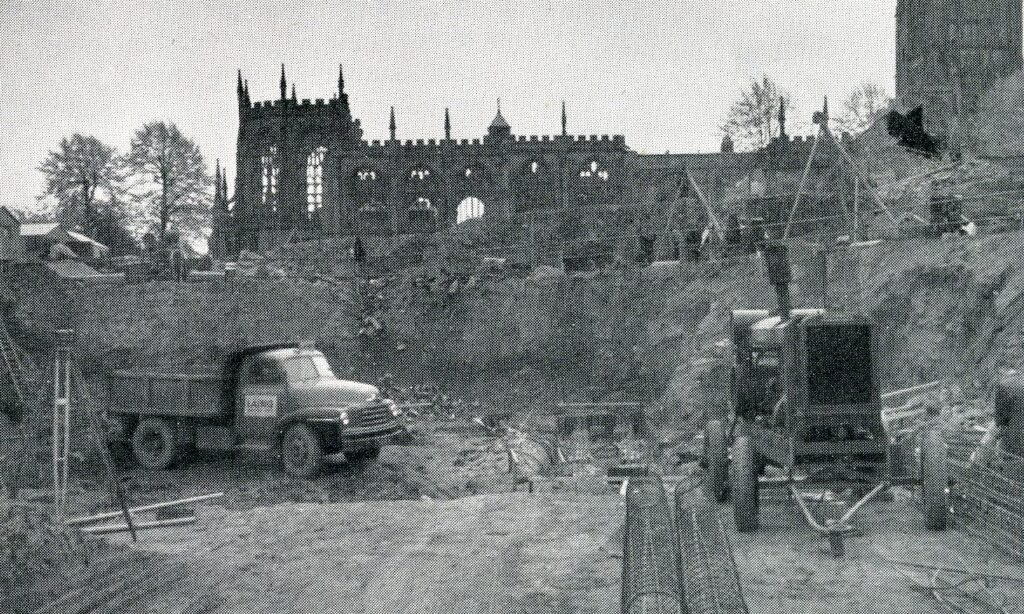
And yet another strike—was there never to be an end ?—for on April 23rd 17,000 dockers at five major ports ceased work.
Three days later, as was expected, a Conservative Government was elected with a majority of 60 seats.
So far the various recent strikes, while being —as all strikes ever will be—highly detrimental to the welfare of the country had not been catastrophic but on May 28th when the railway strike commenced many were filled with dire forebodings. The railways were the nation’s arteries through which its life-blood flowed, and now that blood was almost stilled.
On June 1st a State of Emergency was declared and within two days the effect of the strike was making itself felt for six steel mills in Wales were forced to close, while in Coventry the first pinch was felt by the Armstrong Siddeley who had to stop all overtime.
Then, on the 6th, the British Railway executives rose to the most sublime heights of irony for on that day they announced that all train fares would be increased!
Fortunately for the entire country the strike was settled on the 15th.
As if to celebrate, the annual Coventry Carnival was held on June 18th and was the gayest since the war. No fewer than 1,500 performers and 61 tableaux took part in the brilliant and colourful procession and at night a record crowd of 45,000 people gathered in the Park, with the result that the Carnival Committee later announced, with no little satisfaction, that a profit of £2,062 had been made.
The following week saw two long awaited events take place. The football world was delighted to hear that Mr. Carver had arrived in Coventry to take up his duties while the city’s wholesale merchants were equally delighted at being able to move into the new wholesale market which had been built, at a cost of £160,000, on Barras Heath.
On July 4th the dock strike came to an end and industry was once more at peace.
Later in the week the Lord Mayor opened the huge new link blocks in the Precinct. These link blocks gave shopping facilities which were believed to be the first of their kind in the world since there was a full range of shops at first floor level as well as at ground level.
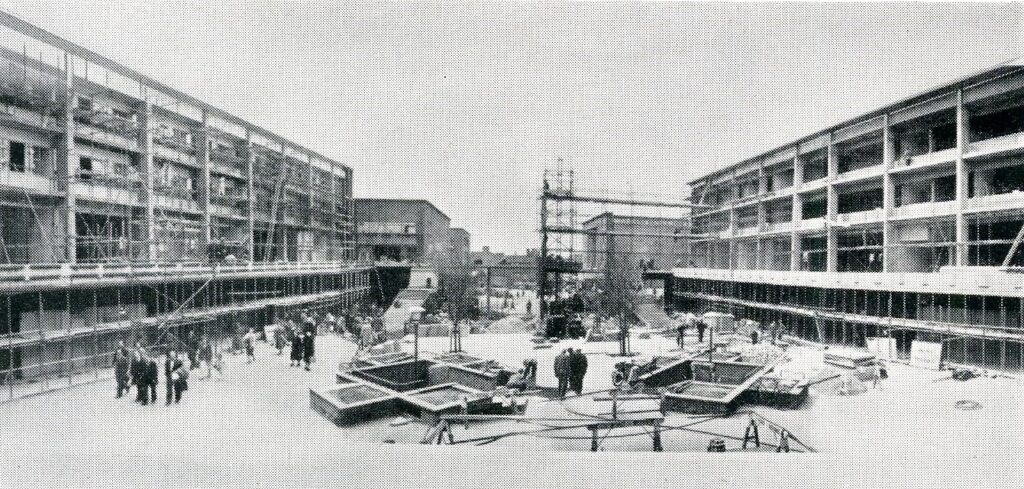
It was fortunate that at this time the temperature started soaring for with the citizens of Coventry sweltering in the 80°’s. the news that coal was going up again, this time 12/8d. a ton, did not seem so hard to bear.
Neither did the news that a few of the more hot-headed Cypriots had started a campaign against Britain, and the fact that the Corporation had decided to resume its Civil Defence Duties, well . . .
On July 20th, Coventry’s great benefactor, Sir Alfred Herbert, made yet another magnificent gesture. He announced that he intended to double his original gift of £100,000 made in 1938 to provide an Art Gallery and Museum in order to cover the increased cost of building.
The month ended with the news that Austria had finally regained her freedom from the four occupying powers.
At the beginning of August all Coventry was amazed to see how apparently easy it was to rob a bank, for on the morning of the 3rd, in a daring daylight robbery, £23,400 was stolen from the Gosford Green branch of Lloyd’s Bank. A reward of £2,000 was offered for information which would lead to the recovery of the money, and within a very short space of time the police had a suspect under arrest.
The money, however, was never recovered.
At the end of the month the football season opened and Coventry City came up to all expectations with a brilliant win over Bournemouth.
September brought unwelcome news regarding the Maudslay Motor Company.
This old Coventry firm which had stood in Parkside for 50 years had decided to transfer its activities to Alcester. Another link with the past had been broken.
At the same time it was learned that Cornercroft Limited were vacating their premises in Queen Victoria Road which the Corporation was taking over to include in the new shopping centre, and moving into the old Maudslay Works.
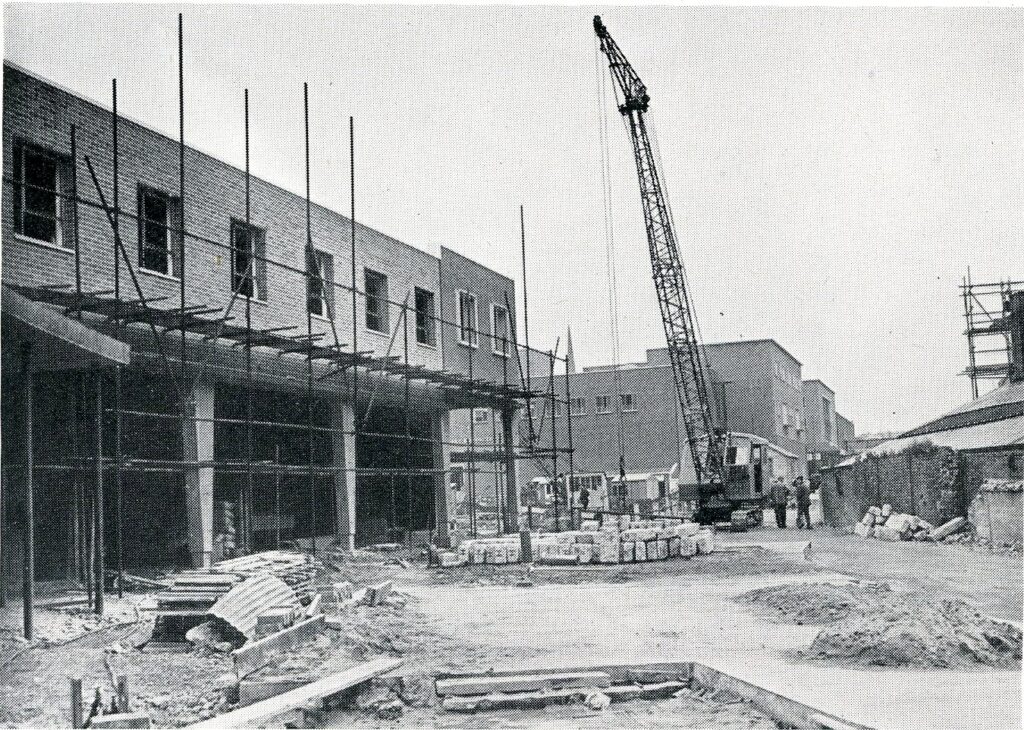
On October 13th a new school, the Woodlands, was opened in Broad Lane and at the same time it was announced that two important building projects, the reconstruction of the railway station and the construction of the new Civic Theatre would shortly commence.
A few days later, the Lord Mayor, Alderman Dewis arrived at Strasbourg where M. Guy Mollet, President of the Council of Europe presented him with the friendship shield, diploma and cheque for £250. This shield, which would be presented annually to the city which had done most to foster international understanding had, in the first year, been unanimously awarded to Coventry.
November saw the death of two of Coventry’s prominent citizens. On the 15th E. H. Ford, O.B.E., who had been the City Engineer from 1924 until his retirement in 1949 passed away, and on the last day of the month Doctor Neville Gorton, Bishop of Coventry, died after a short illness.
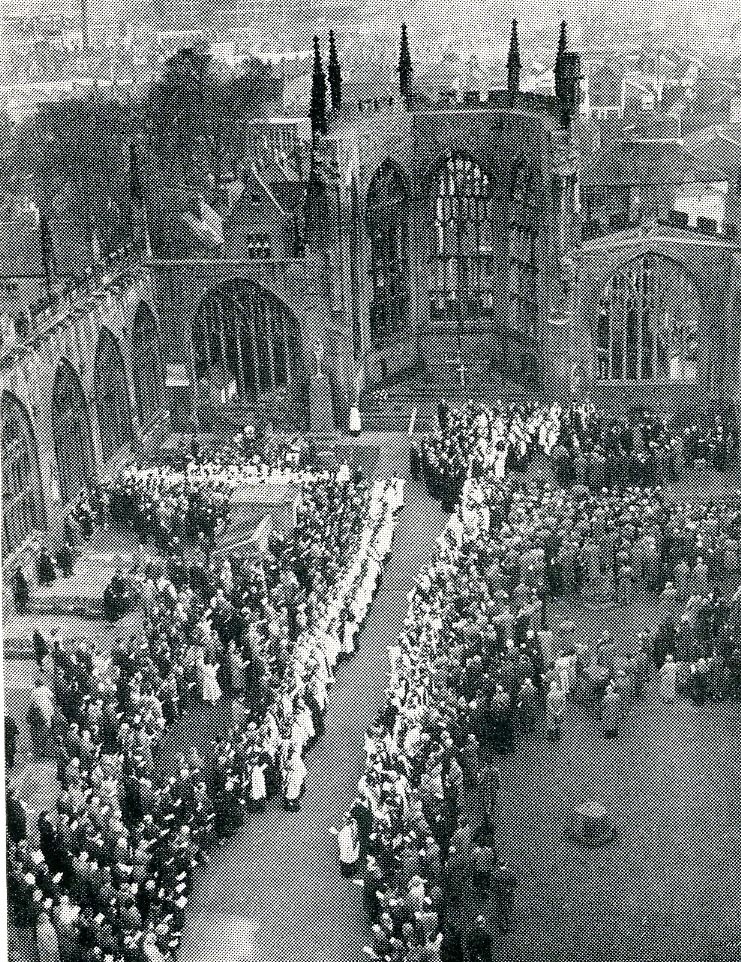
By a special dispensation the Bishop was buried in the ruins of the cathedral in which he had been enthroned in 1943.
The service was conducted by the Arch-bishop of Canterbury in the presence of seven bishops, more than 100 clergy, the Lord Mayor and six mayors from neighbouring cities and many hundreds of Coventry citizens.
In his address the Archbishop said of Dr Gorton “so it was that he made his impact like a lovely, loving, burning flame of God’s compassion and God’s fellowship on this city”.
By the middle of the month most people’s thoughts were once more turning to Christmas and on the 19th the Lord Mayor switched on the illuminations in Broadgate and Greyfriars Green so that at night they resembled scenes from fairyland.
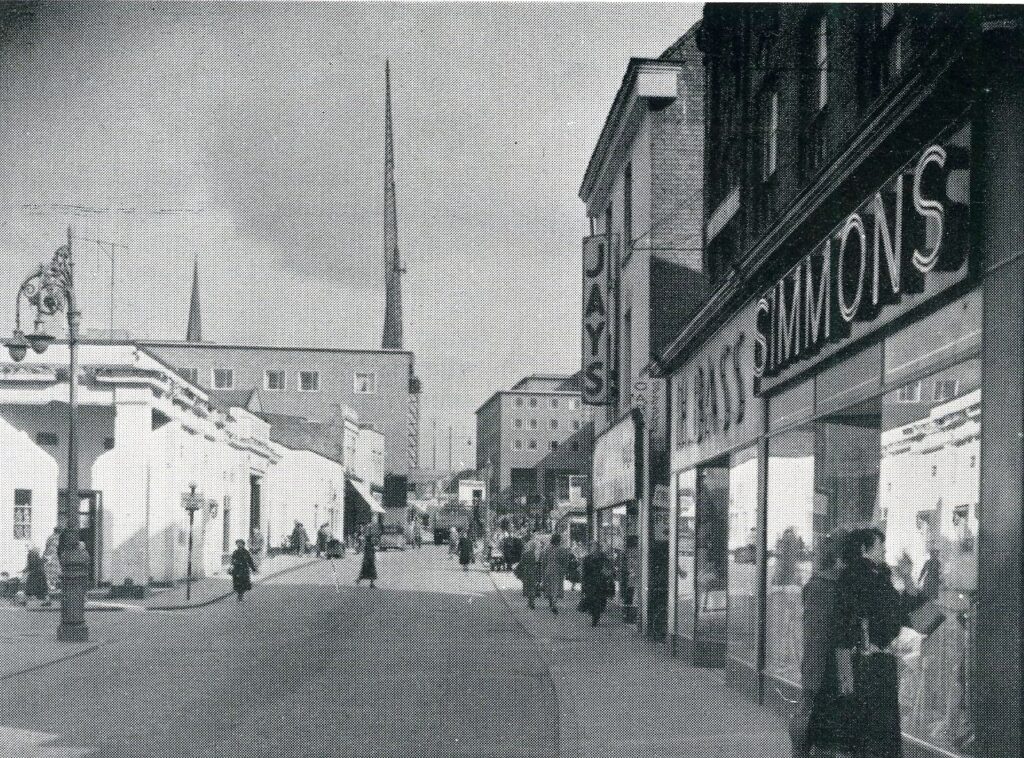
It was at this time, too, the traditional time of giving, that an anonymous donor, of whom all that was known was that he was a Coventry born citizen, gave £20,000 to the cathedral to pay for the great tapestry which was being made for the High Altar.
The Christmas period was mild with temperatures in the 50’s and on the whole was spent quietly by all except the football enthusiasts who were able to cheer them-selves hoarse as the City won three games in succession.
This jubilation was very short-lived, however, for on December 30th it was announced that Jesse Carver, despite his three year contract, was to leave Coventry owing to health reasons.
From Alfred Herbert News Vol 31 No 3 May-June 1957
